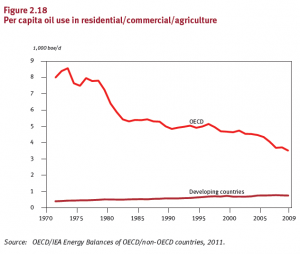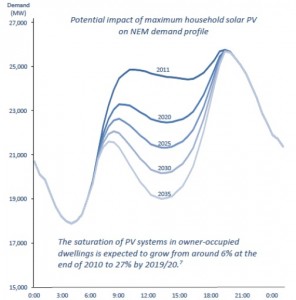I’ve been meaning to post about the Australian Energy Market Operator’s report on the feasibility of a 100 per cent renewable electricity supply system for Australia (H/T commenter Ben). In the meantime, Brian Bahnisch at LP has done a detailed summary, so I’ll refer you there and make a few points of my own.
First, this study should kill off, once and for all, claims made here and in many other places (notably, at Brave New Climate) that the intermittency of renewable electricity is an insuperable problem.[1] The AEMO is the body that manages the electricity market on a minute-to-minute basis, so it has the expertise to assess this claim, unlike the many amateurs who have tried their hands. And, since it might have to do the job, it has no reason to understate the difficulties of a renewables-based system.
Second, the estimate cost of $111 to $133 per megawatt-hour represents an increase of $60-80/MwH on current wholesale prices, or 6-8c/Kwh on retail prices. That’s much less than the increase we’ve seen thanks to the mishandling of electricity market reform. If we wound back those costs, we could actually end up with both 100 per cent renewables and cheaper electricity.
Third, although the study envisages a role for electric vehicles, it doesn’t present a full-scale program for decarbonization. But once you have a scalable, fully renewable electricity supply, everything else is comparatively easy.
Finally, if we take Tony Abbott at his word in wanting direct action to deal with climate change, this report provides him with a blueprint. If we want to, we can eliminate the great majority of domestic CO2 emissions simply by mandating renewable technology and electric vehicles. The cost would be substantial in dollar terms ($250 billion for the electricity component). But, over a couple of decades, it would be a barely detectable deduction from growth in national income.
Update As it turns out, there’s a response at Brave New Climate from Martin Nicholson. Nicholson reports on a study of his own, in which nuclear is included in the mix. On Nicholson’s estimates, this substantially reduces capital costs, a point of which he makes a big deal. But obviously, renewables have much lower operating costs and Nicholson estimates the levelised cost for his system at $124/MWh to $126/MWh. As he says:
As this is in the middle of the AEMO range, wholesale prices are likely to be similar with or without nuclear
Given that very few current-generation nuclear plants have been built, cost estimates for nuclear are speculative. The obvious inference for Australia is that we should push along with renewables, and take a “wait and see” position on nuclear, observing developments in the UK, US, France and China. If they can deliver nuclear safely and at low cost, we can add it to the mix (say, after 2030).
Sadly, I think most of the BNC readership are locked into a position that nuclear must be the answer, which requires them to believe that renewables won’t work. Even a comprehensive demonstration that renewables can deliver a 100 per cent solution at a cost comparable with optimistic estimates for nuclear isn’t going to shift them.end update
fn1. This is part of a rhetorical manoeuvre aimed at pushing the conclusion that nuclear is the only feasible zero-carbon option. Once it’s admitted that 100 per cent renewable electricity is feasible, nuclear advocates need to present a case based on comparative costs. In the Australian context, it will be very hard to make that case, given the need to set up a complete nuclear infrastructure from scratch.







Recent Comments